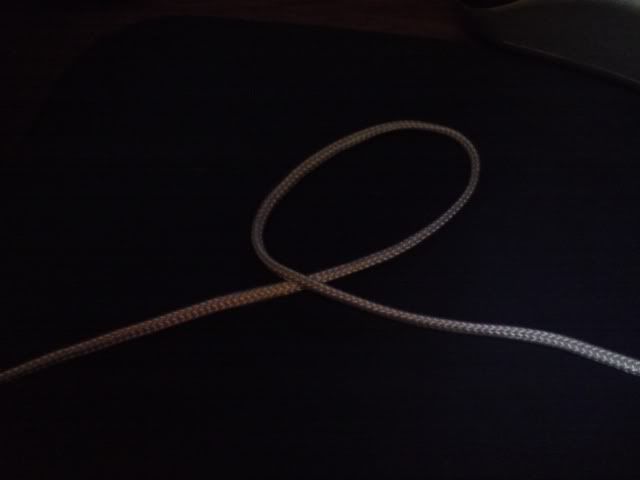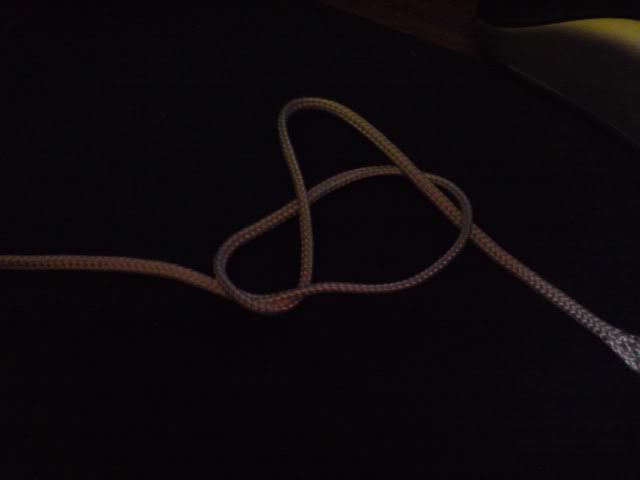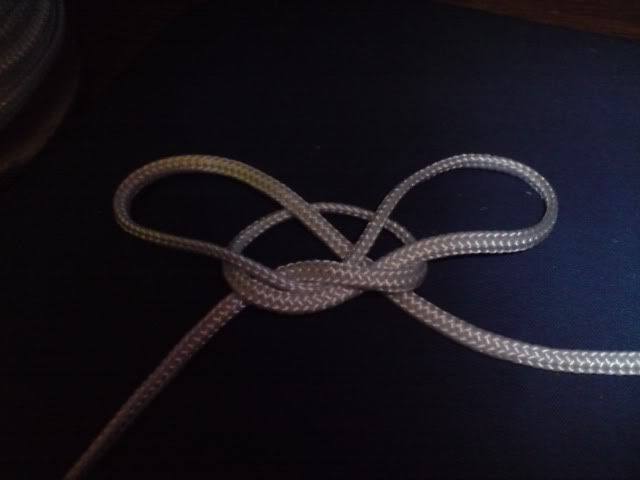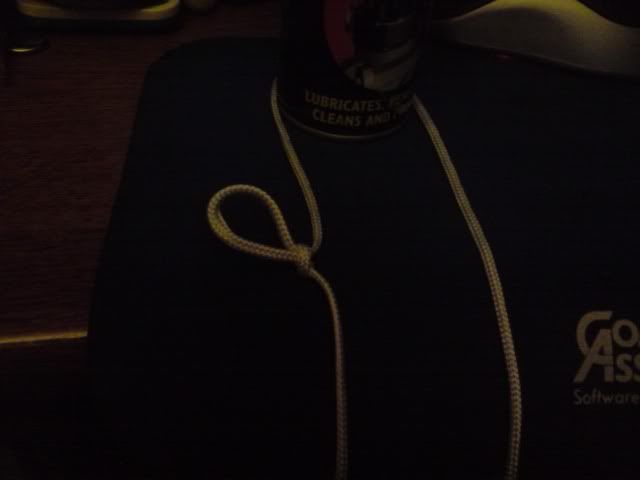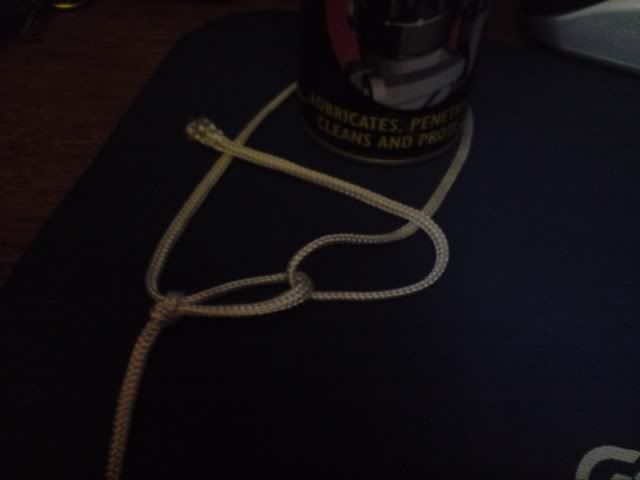oooookay, i am so lost right now...
right so the slippery hitch for line tension? i take it you guys don't use this to alter line tension
you simply make a very taut line to suspend your tarp from?
see i'll be using ties on both sides of the tarp so one end i will want a fixed knot the other a
tension knot?
i'll have a propper read of this post tonight i've only had a quick look atm as i'm in work
but there is some good advice on here.
ta
pete
I think that the only reason you might be confused is because different people prefer
different knots. All you need is the cord fixed at one end and the ability to make the
line tight and tie it off at the other end.
In order to make it easy to undo later, you are better off with knots which don't tighten
up and jam, and making slipped knots (i.e. putting a loop through instead of the end)
means that you can just pull on the free end to release it - the bow you tie in a shoelace
is just a double-slipped reef knot.
For the fixed end, the Figure Of Eight Noose Hitch (known rather more concicely as the
Siberian Hitch or the Evenk Hitch after the Evenk people who live in Siberia) is good for
this because a) it's OK under any circumstances, b) there are a couple of really flash
ways to tie it which are difficult to follow at full speed and make you look like a pro

At the adjustable end, you need something that is, er, adjustable. And preferably
something which gives you a bit of an advantage in the way a pulley system does.
The Taut-line hitch (the second knot Ray Mears uses on his video) gives you a bit of an
advantage but it depends on the diameter of the tree and may not be enough if you have
stretchy cord, a large distance between your trees, a thin tree, and you need (or like) the
ridge line really tight.
The Trucker's Hitch gives you more line to play with because you can make the loop quite a
distance from the second tree. If you use cord that doesn't twist and jam, then
novembeRain's version is easier to learn. I prefer the other way as it does have the
advantage that you don't have to reeve (thread) the loose end through anything - handy if
you have 15m of ridge line and your trees are 4m apart.
There are plenty of other knots which would do the job - if you are interested, Google for
"midshipman's hitch" or 'prussic knot'
The last knot Ray uses is the Adjustable Grip Hitch but a lot of people call it the Guy
Line Knot because that is all they use it for. It's only any good when the loop is around
something thin, but if that is what you are doing, it is perfect. It wouldn't be any use
around a big tree, for example, because the wide angle of the loop will tend to pull
it apart.
You can get away learning only one knot to replace all three Ray Mears uses:
It starts off like the Guy Line Knot but then you make the locking bit outside the
loop, not inside. Depending on the cord you use, you might need three turns inside
the loop instead of two to stop it slipping back, but usually making sure it's tight is
enough.You do need to make sure it is tight to start off with, but once it has a grip,
it will tighten itself. A pull on the loose end once it has a grip will ensure everything
is both hunky and dory.
Here is the same knot from both sides
You can slip it (i.e. put a loop through when making the final turn instead of putting
the end through) but it isn't really necessary because it is so easy to undo and
never jams, and it does make it not quite so easy to get really tight. Once it
grips, though, it will tighten itself.
You can use it on both trees and your tent-pegs. The way you get the advantage
to tighten up your line is to hold the cord between the knot and the tree on the side
that doesn't go to the other tree (e.g. in the bottom knot in the picture, the bottom
side of the loop). Then pull back to tighten. - then as you release it back, you slide
the knot to take up the slack.
You can use the same knot (but not in a loop, tied to the ridge-line) to tension
your tarp along the ridge-line (where it has the built-in advantage that the loose
end will stop water running down the line and under your tarp) and there's no
reason why it can't be used to attach guys to the loops on your tarp. If you have
a small loop at the tarp end, you can make fine adjustments from underneath the
tarp if it's pouring with rain

For some of those uses, other knots would be preferred because, once you know
them, they are easier and quicker to tie and untie, and you don't need them to be
adjustable. But if you only know this knot, you can set your tarp up securely.
And you don't really want ties on both sides of the tarp, it will put a lot of strain
on the material and the seams. Use a continuous line from one tree to the other.
Then use two short bits of cord with prussic knots, guy line knots or the
one above to tie the tarp to that ridge line cord (using the loops you were
going to tie to before)
If there are any lifter loops along the ridge, pass the ridge line cord
through these before you string it up between the trees.
Ian


